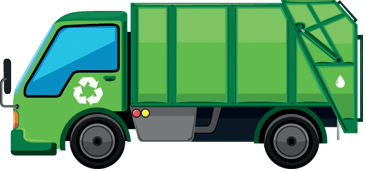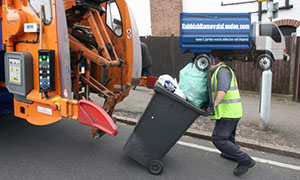by Joanna Burns December 5, 2014
- In 1885, the first garbage incinerator was built on Governor’s Island, NY Harbour.
- In the years to follow – up to 1908, rubbish removal practices in the US improved greatly which resulted in the construction of 180 garbage incinerators in total.
- By 1889, people living close to dumps were complaining to local authorities as living near such places was unbearable – the dire need for new rubbish removal and waste management practices was evident.
- In 1893, Boston residents were still in the practice of disposing of waste in ‘amusing yet horribly menacing ways’ – properly organised rubbish collection system was in place, but it was paid so people weren’t willing to fork out for rubbish removal.
 In 1896, official records of the City of Chicago, indicate that the waste problem plaguing certain portions of the city was becoming unbearable and people were dying because of it.
In 1896, official records of the City of Chicago, indicate that the waste problem plaguing certain portions of the city was becoming unbearable and people were dying because of it.- In 1897, rubbish collection moved a step up with the construction and putting into operation of the first ever recycling centre in NYC.
- A year later in 1898, NYC’s Street Cleaning Commissioner, establishes the country’s first rubbish sorting plant in order to separate different types of waste after rubbish collection and make recycling more efficient.
- In 1899, official acts by the US Government, ban waste dumping in all rivers, especially navigable ones as rubbish floating in rivers is hazardous to vessels on the river.
- In 1900, All American cities begin record keeping of amounts of waste processed after rubbish removal.
- Also in 1900, legislation made rubbish removal in US the job of local public authorities, prior to that health authorities were in charge of rubbish collection and disposal.
- In 1900, many settlements in North America had their own piggeries – special farms where pigs were fed waste, a weird but effective way to follow up on rubbish collection practices. It was estimated that one healthy pig can eat up to a ton of waste per year.
- In 1902, A Massachusetts based survey indicated that 80% of all towns and cities in the state had a proper rubbish collection system and provided regular amounts of refuse.
- In 1904-5, large to medium scale recycling operations are popping up over Chicago and Cleveland.
- In 1905, NYC council decides to use the energy created by the city’s waste incinerator to illuminate the Williamsburg Bridge – a good reason to keep the city’s rubbish removal system working properly.
- Unfortunately in 1909, many of North America’s waste incinerators were closed down as they were inadequately built and poorly run. In result, the continent’s vast land supply and scarce population provided a solution, although not a good one – dumping and landfills.
- In 1910 were established the first neighbourhood based sanitation organisations which observed rubbish removal and kept suburbs clean. Their efforts were collectively known as city beautification programs.
- In 1917, WWI is in full swing and the US government introduces a mass scale recycling program where after rubbish removal, waste is recycled for wartime purposes.
- 1932 saw the introduction of the first compactor rubbish removal trucks.


 In 1896, official records of the City of Chicago, indicate that the waste problem plaguing certain portions of the city was becoming unbearable and people were dying because of it.
In 1896, official records of the City of Chicago, indicate that the waste problem plaguing certain portions of the city was becoming unbearable and people were dying because of it.